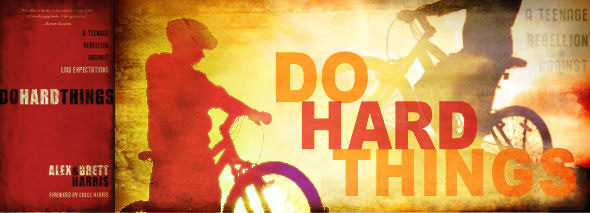1. Tell us about how you began to draw. How has being homeschooled helped you develop your talents? I've enjoyed drawing since I was a little girl and always wanted to learn more about communicating with the visual arts. From the time I was just a little girl I've been pouring through the books soaking up ideas and tips on drawing and and painting. Through home-education I had the time to practice drawing and doodling wherever I was. Dad and Mom also made sure my sister and I always had plenty of art and craft supplies around the house to experiment with. 2. Describe your artistic style. I don't know if I can pin-point it just yet, but I find myself most often trying to capture the simple pleasures of childhood like reading and exploring out of doors. I'm greatly influenced by Jesse Wilcox Smith and Tasha Tudor, but I'm still working on finding my precise "voice" without copying those I admire. My favorite illustrators would be Jesse Wilcox Smith, Beatrix Potter, E.H. Shepard, and Trina Schart Hyman, and Tasha Tudor. My other favorite artists are Monet, Rembrandt, and Sargent to name a few. I have "learned from the Masters" by mostly looking long and hard at their work, mentally separating lights from shadows, pondering what colors they mixed to come up with what I see, and examining how well the movement and action translates in my imagination. To keep my style nurtured yet unique while I'm "looking long and hard" I think about how the artist captured certain elements, or I might take notes on how I would do something differently. To keep my style from changing too drastically I simply keep my priorities and my own personal ideals for my work in the forefront of my mind while I'm drawing or painting. 4. Is anyone else in your family an artist? Both of my parents drew when they were young, and my younger sister Emily Rose is a photographer and graphic designer. It's been a blessing to have a sister that knows so much about the computer, because our giftings compliment each other so well. 5. Of the pieces that you have done, which are your favorites and why? In "The Tree House" there is a print of "The Accolade" tacked on the wall, a painting associated with chivalry, heroism and honor. I used it to symbolize what the children were aspiring to: the nearly-lost virtues of bravery, protecting the innocent, and love of family. My second favorite is "The Library." I struggled with the composition, color, and painting "too tight" for a long time. It took three tries before I decided to go to Beatrix Potter for advice. Her natural, fluid style was so refreshing and inspiring: exactly what I needed. I think it has become one of my favorites because I worked the hardest for it. :) These are also my favorites because I feel I "pinned" them both; they turned out exactly as a pictured them in my mind. When I look at them now, I see things I would do a little differently now, but I can see I made a lot of progress while working on "The Tree House" and "The Library." 6. Your work makes it clear that artists can honour God without needing to include religious themes (crosses, angels, etc.) in their paintings. What advice can you give to MMM readers about glorifying God through pieces that don't have overtly "Christian" messages? Like all things, it starts in the heart. If our hearts are filled with love for God's glory and we are committed to communicate only what is honoring to God, then I believe God will inspire us with ideas that will glorify Him, directly or indirectly. If we rely on ourselves to "creatively" spew out whatever we want, our work won't look much different than the world's. We need to remember that God will hold us accountable for the images and ideas we present to the world. The world has so much ugliness in it already. The world needs to see hope. So I think it's important the the Christian artists create art the way they want to live their lives: "for the glory of God and the refreshment of the soul." (Bach) 7. On your blog you mentioned an exhibit you held recently at a local library. How was it? For nearly the whole month of June I displayed over twenty pieces I've made during the past two years. I received a lot of positive feedback from the community. (I had a guest book, which was helpful in obtaining most of that feedback.) 8. Tell us about your art business on Etsy. What advice do you have for artists thinking about selling their work online? I currently use Etsy to sell my arts prints. It's free to set up an Etsy shop, and they take only a very small amount for each item you sell. When uploading your work into your shop, be sure you use images that are clear, accurate and high quality. No matter how good the original or print is, the would-be-buyers will be turned off if they see an unflattering picture of your work. To advertise your Etsy shop, it's very helpful to get involved in online communities. One way to get your name out there is to frequently comment on blogs, write about what you want people to know you by, and offer to write guests posts on more popular blogs. It's also good to know how to make buttons for your blog or shop so your following can promote you on their own blogs. 9. In terms of art, what are your plans for the future? This summer, my sister Emily Rose and I started a home business called Noble Rose Press. We sell paper dolls that we've created based on historical women, so that will keep me busy. I also plan on continuing to study art and sell my art prints. I'm also planning on illustrating children's books in the near future.
Breezy Brookshire is an 18-year-old artist whose interests span everything from visual arts to writing, music, and homemaking. A recent homeschool graduate, Breezy spends her time drawing and painting, teaching art lessons, honing her piano skills, blogging about her artistic endeavors and spiritual journey, and delving into God's word (her favorite theological topics include family and church reformation). In 2009, Breezy and her younger sister Emily Rose co-founded Noble Rose Press, a small business that sells paper dolls based on Christian women whose faith and servitude in centuries past made a mark on history that continues to inspire girls today. After getting the business off the ground last year, Breezy sat down with MMM to chat about how her creativity and faith. 3. Which artists have you been influenced by? How do you 'learn from the masters' while still maintaining your own unique style?
3. Which artists have you been influenced by? How do you 'learn from the masters' while still maintaining your own unique style? So far, my favorite is "The Tree House." It's a pen and ink drawing of two young brothers and their little sister reading stories in their tree house. I chose to execute it in black-and-white because I've always admired the old engravings of the 1800's and their story bookish quality.
So far, my favorite is "The Tree House." It's a pen and ink drawing of two young brothers and their little sister reading stories in their tree house. I chose to execute it in black-and-white because I've always admired the old engravings of the 1800's and their story bookish quality. To see more of Breezy's work, visit her blog, Etsy store, and Noble Rose Press.
To see more of Breezy's work, visit her blog, Etsy store, and Noble Rose Press.
Tell others about this article using the "Share" button below. Thank you for your support!

Hi readers!
This is Oksana, your editor, and I'd like to take a moment today to wish MMM's readers and staff a merry Christmas! I pray that your Christmases are filled with joy, peace, fellowship, and worship. May you grow closer to God and be filled with undying awe at the gift that he gave our world 2009 years ago. May you grow closer to the people you love as you share time together this Christmas creating memories and building one another up with love. And may you always continue to offer your artistic talents to God, using them to glorify him and to bless those around you.
As the editor of MMM, I made a commitment to support your efforts in doing that, and I apologize for how quiet MMM has been over the last few months. We will be back in 2010 with new articles and a renewed mission to help Christian artists achieve their potential in Christ. Readers and staff, your support has been invaluable in making MMM possible and helping this ministry grow. I've appreciated every article, proofreading, comment, suggestion, and prayer that you've offered to this ministry. I hope that, in return, you have been blessed and encouraged by the content and community that exists on this site. I look forward to seeing God's plans for this website in the coming year, and I hope you'll come along for the ride! See you in 2010!
 Merry Christmas,
Merry Christmas,
Oksana
Image credits: graphic and photo by Oksana, brushes by Melfina
MMM's readers have done a lot to help this e-zine get to where it is today. Oksana, the editor, has a special message for everybody who has supported our organization thus far! Click on the video below to view.
Multi Media Ministry: A Message from the Editor from Oksana K. on Vimeo.
If, for any reason, you can't see the video above, here's Oksana's message in a nutshell:
- Your readership, prayers, contributions, suggestions, and comments are appreciated more than you know! Thank you for supporting this website as much as you have.
- Two of MMM's staff members, editor Oksana and assistant editor Mattie, are going off to college. They need your help to keep the e-zine running with as much content as it used to have.
- We accept a variety of reader-submitted articles, as well as artwork of every genre. Please send in your work to be featured in our e-zine!
- Spreading the word is extremely important for MMM. If you'd like to share an article with your friends, please use the AddThis feature at the bottom of each post to post it to a social networking site. If you'd like to link to the e-zine itself, use the button HTML code on the sidebar!
Thanks again for your encouragement and help. Have a blessed fall, everyone!
Music: "Love is on the Move" by Leeland. See MMM's review of this album here.
Tell others about this article using the "Share" button below. Thank you for your support!
Leeland is known for writing songs that send challenging messages about the Christian life, and in that respect, this record is no different: poverty, suffering, and human weakness are just a few of the themes that the band explores in Love is on the Move. To add context to the songs that follow, Leeland opens their record with The Door, a vivid reminder of the rewards that await believers in heaven, and an invitation to exalt Jesus as the only way to get there. In their liner notes, the band calls the song "an anthem," and it certainly lives up to this description -- it's packed with passion, energy, and joy (Leeland's smile is almost audible as he sings the opening verses). It's a lively and colourful opener that really captures the spirit of Christian hope. The next track, Follow You, is a collaboration with singer Brandon Heath that explores what it means to pursue Christ. Today, most people interpret "following Jesus" as something that concerns the career they choose, the spouse they marry, or the church they attend. But Leeland reminds listeners that people who want to follow Christ wholeheartedly must also be willing to enter "the homes of the broken" and the lives of "the poor and the needy" -- a message that is desperately needed in an increasingly self-centered and apathetic world. In addition to its compelling lyrics, the song is very evocative musically -- there's a touch of melancholy in the melody which seems to echo the pleading voices of the poor and convey the urgency of their needs. But there's more to this track than meets the ear. During their upcoming tour, Leeland will help listeners translate the song's message into action by partnering with Food for the Hungry to give concertgoers an opportunity to sponsor children from developing countries. 'Follow You' is set to make a difference not only in the hearts of listeners, but also in the lives of needy children all around the world. Translated, Via Dolorosa means "the way of grief," a reference to the road upon which Jesus walked as he carried his cross to Calvary. While I hate to nitpick, I have to mention that the band's pronounciation of the word "dolorosa" sounds more like "delarosa" (which means "way of the rose"), but thankfully, this does little to detract from the song's meaning. Its lyrics are deeply rooted in the gospel, describing Christ's love and sacrifice in a way that both humbles and emboldens the listener. Although this chapter of Christ's journey is usually portrayed with somberness, Leeland tells about the Via Dolorosa with a sense of triumph and awe, fusing energetic rock rhythms and melodic violin embellishments into a lavish and victorious song of praise. In Pure Bride, Leeland experiments with an ambient style that combines a dream-like climate reminiscent of Revelation with rich lyrical imagery and a joyful call to "make way for the Lord." The lyrics are straightforward and simple, but each word is treated with a deep sincerity that invites focused reflection and worship. The accompaniment starts off sparse before crescendoing into a sweeping chorus of praise that includes -- surprisingly -- a children's choir. If this sounds cheesy to you, don't worry: the track is as genuine and honest as any of Leeland's songs, and it retains every bit of the contemporary, youthful vibe that fans have come to love. The lyrics of Carry Me on Your Back are written like a prayer, asking God to help the speaker "through the storm." The music, at first listen, may seem too upbeat and cheerful for the song's subject matter, which talks about furnaces, raging oceans, and darkness, but that's precisely the object of this track -- instead of dwelling on negative feelings, it focuses on the power of God and the "promise [that] never fails." The next track, New Creation is a joyful reflection on the fresh-start freedom that Christ has given his followers. Backed by upbeat, rhythmic percussion and electric guitar, the song has a distinct teen appeal, and since it's catchy and easy to sing along to, it'll probably become a youth-group staple for years to come. Don't be fooled by the title of Lift Your Eyes Up -- it's very different from the 'Lift Your Eyes' on Leeland's debut CD. This track is a heartfelt message to Christians going through difficult experiences ("It feels as though your world's crashing down ... The sun has gone / your heart is dry..."). As a listener, it's extremely comforting to hear lyrics that genuinely understand and sympathize with your pain, but the song isn't all about commiseration -- it also offers earnest encouragement ("Come on, come on / lift your eyes up!") that leaves listeners motivated to delve deeper into their faith during times of trouble. Besides its beautifully-crafted lyrics, this track is (on a musical level) one of the most melodic and moving songs that Leeland has ever recorded. Band pianist Jack Mooring calls the song Weak Man "intense," and with good reason: it invites listeners to look at the issue of human weakness as an opportunity to make God "higher" in their lives. Accepting -- and becoming content with -- one's weakness takes trust and humility, and it's certainly not a message that the average reputation-obsessed, control-desiring person likes to hear, so Leeland deserves props for standing by this message unashamed. For me, however, the song's melody isn't as memorable as that of other tracks; musically, it doesn't quite live up to the intensity of its lyrics. One of the most powerful tracks on the album is its title track, Love is On The Move. The song is a hope-filled reminder that God is working day by day to meet humanity's need for love ("Love is on the move / revealing Heaven's truth / love is on its way and it will find you..."). Its melody is backed by a sweeping orchestral arrangement which perfectly captures the overwhelming awe felt by believers when they meditate on their Father's love. If you're looking for a song that will engulf you in the wonder of God, you won't be disappointed by track 9. Returning to a guitar- and drum-driven rock style, Leeland exhorts Christians to Learn to Love ("Come on, where's the love that makes us stronger / binds the hearts of every colour? ... We're all God's children now!"). Though the song's main theme centers around showing love to fellow Christians, Leeland adds a few worship elements to the lyrics ("Jesus is the King / we lift our voice and sing"), as if to remind listeners that loving people and loving God are inseparable qualities -- it is only through Jesus that human communities can truly be 'bound' and 'strengthened.' Wrapping the album up, Holy Spirit Have Your Way is a touching commitment to "surrender all" to God. The song is closer to pop than anything that Leeland has done before, and it introduces a gospel choir in the chorus (another first for the band) which adds a wonderfully soulful quality to an otherwise-mellow song. The bonus track My Jesus follows in a similar vein, with reflective, poetic lyrics based on the Biblical metaphor 'living water': "Here on the bank I stand / in the water is the hope of man / unclean I fall before you now / Jesus come wash me inside out." The album ends just as it had begun -- with worship, and with a reminder of God's crucial, infinitely vital role in our lives. Leeland has established a strong identity in the CCM market with their distinctive style, bold lyrics, and beyond-the-stage faith. While this CD shows some departure from their previous work, the band stays true to their compelling message and youthful spirit. It's a record that both established fans and first-time listeners are bound to enjoy.
With every CD, the Grammy-nominated progressive-rock band Leeland seems to change their style a little. Their first record, Sound of Melodies, had a unique melodic rock sound with a touch of the indie stylings made popular by artists like Jon Foreman. Opposite Way paved the way for a bolder, rockier sound driven by energetic guitar and drums. In their newly-released Love is on the Move, Leeland fuses the best of both worlds -- the melodic, alternative charm of their debut CD with the youthful, catchy tunes of their sophomore record -- into a collection of expansive, beautifully-orchestrated songs filled with more variety than the band has ever shown before.  Article by Oksana K.
Article by Oksana K.
Image credits: Graphic by Oksana K. Photograph by Jeremy Cowart.
Visit Leeland's website.
Tell others about this article using the "Share" button below. Thank you for your support!
Of course, the reviewers who compose these critiques aren't merciless writers out on a mission to destroy your reputation and tear your self-confidence to shreds. All artwork deserves critique to some extent, and reviewers who ignore flaws and consistently give positive feedback are labeled "too nice" and their opinions lose credibility in the eyes of others. In the art business, while plenty of lackluster work is being produced, a lot of emphasis is placed on brutal honesty (just look at the success of judges like American Idol's Simon Cowell)-- add these two factors together, and the creative realm is every critic's dream. A problem arises when the critic is a Christian. How do you reconcile fruits of the Spirit like love, gentleness, and patience with your honest opinions about a piece of art? If the artist is also a Christian, how do you treat them as a brother and respect their efforts for God while still pointing out the flaws in their work? The Bible is clear, however, that honesty and encouragement can co-exist, and with a little discernment Christian reviewers can write critiques that don't crush the spirits of hard-working artists. If you're a reviewer, here are 5 tips you should keep in mind when giving negative feedback... 1. Find your Base Criticism can generally be broken down into three parts. There's personal preference, which judges work based on your tastes; quality, which judges work by how much effort seems to have been put into it and how well it does its intended job; and Biblical compatibility, which judges work according to standards that are clearly spelled out in God's word. For instance, if you're reviewing a CD, a personal-preference critique would say something like, "The accompaniment is boring and the lyrics are sappy." A critique based on quality might say, "The instruments are off-key and the recording sounds very tinny." A Bible-based critique could argue, "The lyrics of seem to glorify sin and make unnecessary sexual references." Of these three options, Bible-based criticism is the most valid and important -- after all, God's opinion is the only one that really counts. Quality-centered critique comes second: the Bible does speak about putting heartfelt effort into everything we do and "working as for the Lord" (1 Cor. 15:58), so there's nothing wrong with reminding Christians of the high standards they should aim for. It is criticism based on personal preference that reviewers should steer away from. This kind of critique is extremely biased and doesn't reflect God's love for diversity in the Christian body: just because you don't like a certain style or genre doesn't mean that God can't use it to reach someone else. Critique that slams work for being "too fancy" or "too simple" or "too bold" for your tastes is petty and self-centered, so it's best to avoid these sort of comments and instead, focus your review on quality and Biblical compatibility. 2. Not all Things are Useful Who is going to see your critique, and what effect is it likely to have? These two questions are crucial in deciding how you want to map out the review. Consider the following situations: - If you are going give your opinions straight to the artist, is it likely to encourage them and help them improve, or will it simply leave them feeling embarrassed and inadequate? In each scenario, critique could have either a positive or a negative effect on those involved, and it's up to you to decide how big the risk is and what you can do to minimize it. If you find that your review isn't likely to serve others in a positive way, maybe it's best not to write one at all. 3. Keep the Audience in Mind If a piece of art doesn't quite work for you, there's a big chance it wasn't intended to. Art can be aimed at very specific age, geographic, cultural, or gender groups. A work that is intended for western, male teenagers who belong to the "skater" culture isn't going to have a deep impact on a traditionally-minded, elderly female living in Japan, who shies away from anything "bold" or "loud" and prefers art that is elegant and subtle. What doesn't work for you may easily work for someone else, so it's a good idea to identify the artist's intended audience and try viewing the piece from their point of view. You can even find a few people who belong to that intended audience and use their opinions on the work to shape your review. 4. Avoid Harshness "Speak the truth in love," the Bible says, and although I may be taking this passage out of context, I think it's extremely relevant advice for Christian reviewers. There's no denying that the use of sarcasm, ridicule, and harshness in reviews has its benefits: it might draw laughs from your audience, make you appear intimidating, or make your compliments seem more desirable. Sadly, all of these personal 'advantages' come at the expense of other peoples' feelings and reputations -- and, worst of all, at the expense of the Bible message. Christians are called to be living proof that God conforms people to his nature, so if God was forgiving and gentle towards us, it's our job to pay that forward to our fellow Christians. An easy way to salvage a less-than-loving review is to use a thesaurus. Identify potentially-hurtful sections in your review and reword them to be more neutral. Change "ugly" to "unattractive." Opt for "plain" instead of "boring." Write "silly" instead of "stupid." It might take some of the 'punch' out of your review, but it'll certainly make you sound more mature and reasonable. Keep in mind that if you have to rely on harsh words to make your review stand out, it's probably lacking in substance and depth. You can further reduce harshness simply by adding some positive comments to the mix: if you search hard enough, you'll probably find at least one thing about the work that you can sincerely compliment. Even if the piece is a train-wreck overall, the fact that you took time to find something positive in it will likely say more about your character -- and God's love -- than about the work itself. 5. Make it Better It's easy to write a detailed investigation into the shortcomings of a work, but it's much harder to actually do something about the problems you see. After you've identified the problems, the last thing you should do is sit back and relax. If that piece of work was really worth no more than 1 star -- and God calls for 5-star efforts -- there's something seriously wrong. What will you do about it? You could, for instance, use your talents to create something of higher quality as an alternative to the lackluster work done by others. Or, if you're not talented in that particular area, you could offer support, encouragement, and practical help to people who are. Either way, criticism alone is useful unless it inspires improvement, and as someone who actively perpetuates critique, it's your job to actively participate in making things better!
For artists, there are few things as intimidating as being on the receiving end of criticism. I'm not talking about the occasional negative comment in a balanced review (though even these can be hard to take) -- I'm talking about a full-out critique, complete with a one- or two-star rating and a long string of paragraphs dissecting every flaw in a piece of work that you spent hours perfecting. Ever had that experience? It's not much fun.
- If you plan on sharing the review with the art community as a whole, is it going to teach them discernment and inspire better effort, or could it introduce a spirit of competition and encourage artists to adopt a people-pleasing attitude to get good reviews from critics like you?
- If you're writing a review for the general public, is it meant to help them navigate through the many products out there and choose something that's worth their money, or is it more likely to promote a critical attitude that will prevent people from truly enjoying art because they're too busy picking out its flaws? Article by Oksana K.
Article by Oksana K.
Tell others about this article using the "Share" button below. Thank you for your support!















